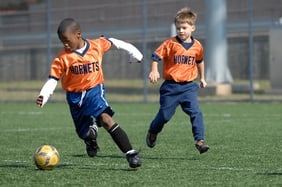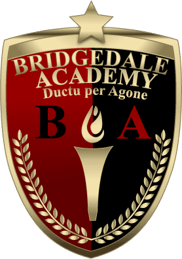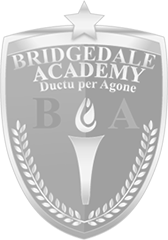Physical Literacy and Long Term Athlete Development
by Mike McPartlin, Headmaster, Bridgedale Academy
(This is the second article of a 4-part blog series about developing physical literacy in young athletes. The first article discussed the general concept of physical literacy. This article discusses the Long Term Athlete Development model.)
 What is the Long Term Athlete Development model?
What is the Long Term Athlete Development model?
When it comes to how physical literacy relates to athletics and the training of high-performing athletes, the Long Term Athlete Development model (“LTAD”) is the gold standard.
Pioneered in Canada in the mid-90’s in order to help develop athletes for national and international competitions, LTAD was the first “athlete development” model to truly apply science to human athletic development.
With chronological age as a guide, LTAD breaks the athlete development process down into a sequence of age-appropriate stages, each stage representing a "window of opportunity" for certain aspects of the process. Physical literacy is developed in the first three stages.
What makes the LTAD model different?
Most methods for the development of elite athletes focus exclusively on chronological age competitions, i.e. in which young athletes compete against other athletes of the same birth year. Thus, a 10-year old born in January of 2007 would compete against a 9-year old born in December of 2007.
 This works to the advantage of the "older" youngsters, including “early” developers, but unfortuntely it also works to the disadvantage of many of the younger “late” developers. This is because at each step along the way, young players of high potential get passed over by the most competitive teams. And too often in the process, these late developers lose the opportunity to continue to develop toward their full potential.
This works to the advantage of the "older" youngsters, including “early” developers, but unfortuntely it also works to the disadvantage of many of the younger “late” developers. This is because at each step along the way, young players of high potential get passed over by the most competitive teams. And too often in the process, these late developers lose the opportunity to continue to develop toward their full potential.
This tendency to favor “older” players continues to manifests itself today in the hockey community. USA Hockey recently announced its roster for the 2017-18 NTDP U17 team, i.e. comprising players born in 2001, and nearly 90% of the players selected for the program (20 of the 23) were born in the first six months of the year.
Chronological Age vs Physiological Age
Taking a more scientific approach, LTAD borrowed ideas and concepts from studies of human physiological development.
 At the same chronological age, different youngsters can be at a significantly different stage of physiological development.
At the same chronological age, different youngsters can be at a significantly different stage of physiological development.
And so LTAD takes into consideration how an individual’s capacity for physical, and therefore athletic, development is dependent more on the individual’s physiological age than on his or her chronological age.
Thus, while all young athletes will go through the same stages of development, some of these athletes (i.e. the early developers) will go through these stages sooner than others (the late bloomers).
But LTAD, by recognizing that the stages of sequential development are more dependent on physiological age, offers guidelines for the development of any and all young athletes, ideally toward the full realization of each athlete's potential.
LTAD's Seven Stages of Development
 In a nutshell, LTAD breaks down athletic development into seven (7) age-appropriate stages. The stages (and their approximate age correlations) are:
In a nutshell, LTAD breaks down athletic development into seven (7) age-appropriate stages. The stages (and their approximate age correlations) are:
- Active Start (Boys and Girls 0-6)
- FUNdamentals (Boys 6-9 / Girls 6-8)
- Learning to Train (Boys 9-12 / Girls 8-11)
- Training to Train (Males 12-16 / Females 11-15)
- Learning to Compete (Males 16-20 +/- and Females 15-19 +/-)
- Training to Compete (Males 20-23 +/- and Females 19-23 +/-)
- Training to Win (Males and Females 23 +/-)
(The LTAD model was developed over a period of more than 20 years, and ultimately formalized and published in book form in 2011. Every hockey coach and parent should take the time to read it. Its title, appropriately, is Long Term Athlete Development by Balyi, Way and Higgs.)
Physical Literacy is developed only during the first 3 stages
 According to LTAD, an athlete’s physical literacy is developed only during the first three (3) of these stages, briefly described as follows:
According to LTAD, an athlete’s physical literacy is developed only during the first three (3) of these stages, briefly described as follows:
- Active Start - Learn fundamental movements and link them together into play
- FUNdamentals - Learn all fundamental movement skills and build overall motor skills
- Learning to Train - Learn overall sport skills
“Learning and practicing age-appropriate movement skills are the basic building blocks for the development of physical literacy and … for competing and pursuing excellence later in life.” from Long Term Athlete Development
LTAD emphasizes that these first three stages are important for ALL youngsters when it comes to the development of their physical literacy: it lays the foundation not only for athleticism, but also for self-confidence, as the ability to move with control and competence transfers into all aspects of life. In other words, "Physical literacy is also a critical component of a child’s development of self-awareness and self-confidence.”
 But for the future world-class athlete, it is absolutely critical that during these first three stages a solid foundation of physical literacy be developed. Because it is only upon such a foundation that a world-class sport-specific skills set can ultimately be built.
But for the future world-class athlete, it is absolutely critical that during these first three stages a solid foundation of physical literacy be developed. Because it is only upon such a foundation that a world-class sport-specific skills set can ultimately be built.
Young athletes should not specialize in one sport
According to LTAD, it is almost always counterproductive for a young athlete to specialize in one sport/activity during these first three stages of development. This represents a critical time in an athlete's development of physical literacy, and even for the future elite athlete, it is important to be as well-rounded and to learn as many different kinds of movement skills as possible.
The impact of puberty on development of physical literacy
The onset of puberty is of course an obvious physiological change in every developing athlete’s life.
Not so obvious is how the onset of puberty impacts a developing youngster’s physical literacy.
This third stage, “Learning to Train,” ends with the onset of puberty. And according to LTAD, the onset of puberty represents the end (or at least the beginning of the end) of a young athlete’s window of opportunity for developing physical literacy.
 And this of course has some very profound implications.
And this of course has some very profound implications.
For one, it means the foundations for youngster’s future athleticism MUST occur prior to his or her going through puberty.
Possible advantage for late bloomers
But in addition, and importantly for the prospective late bloomer, it also means that young athletes who are “late” reaching puberty will have a significant advantage in terms of their future athleticism, i.e. because their window for developing physical literacy remains open longer.
This of course leads into the fascinating topic of “Early developers versus late bloomers,” which will be the topic of Part 3 of this blog series.
Conclusion
The Long Term Athlete Development model offers a science-based method for the development of young athletes. It recognizes the critical importance of physiological age in the sequence of the stages of athletic development. It thus provides a blueprint that allows for the individualized development of each young athlete, no matter how "old" he or she might be physiologically at each point in the training process.
(Part 4 of this blog series discusses physical literacy and the state of youth athletics today.)
To learn more about Bridgedale, please click the button below to schedule a time to chat with Bridgedale's Headmaster.
At Bridgedale we are committed to the development of our young student-athletes, helping them to develop their physical and mental skills so they can perform at their best when it matters most, no matter the arena of life that challenges them. If you would like to learn more about Bridgedale Academy, please click the button below so we can schedule a time to chat.
Mike McPartlin, Headmaster, Bridgedale Academy
Attention 4th Graders
In addition to our 5th through 8th graders, Bridgedale Academy is accepting a limited number of 4th graders for the 2023-24 school year, on a case-by-case basis. Please call me at 708-712-5079 to inquire.
Mike McPartlin, Headmaster

Bridgedale students LOVE going to school,
and so they THRIVE in it.
They LOVE coming to school every day.
And as a result, they are thriving.
They engage academically ...
... and so they come to love learning.
They also love that they get to work on the sport they have such passion for, while also training to become better athletes, all as part of their school day.
They train athletically ...
... and so they more fully develop their skills.
They LOVE getting so much better ... so much sooner.
They are physically fit and mentally alert ... they are thriving.
“Every shot you don't take won't go in.”
Wayne Gretzky
Bridgedale is now enrolling students for the 2023-24 School Year.





